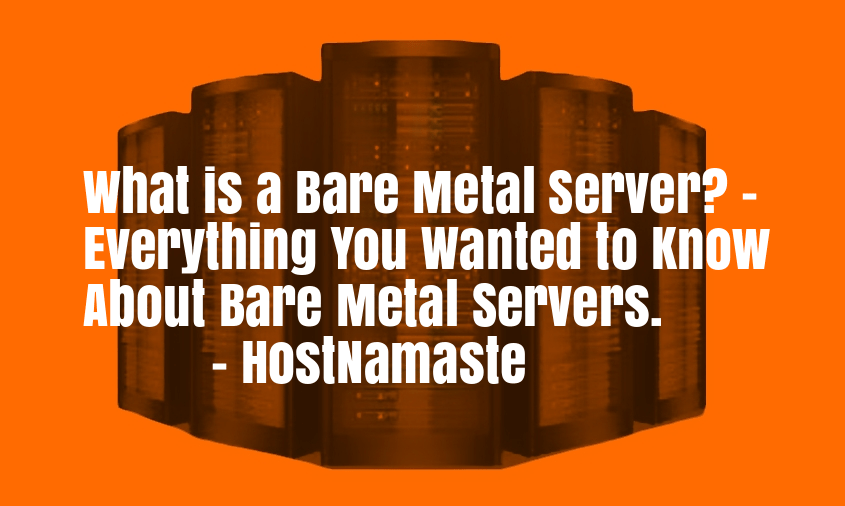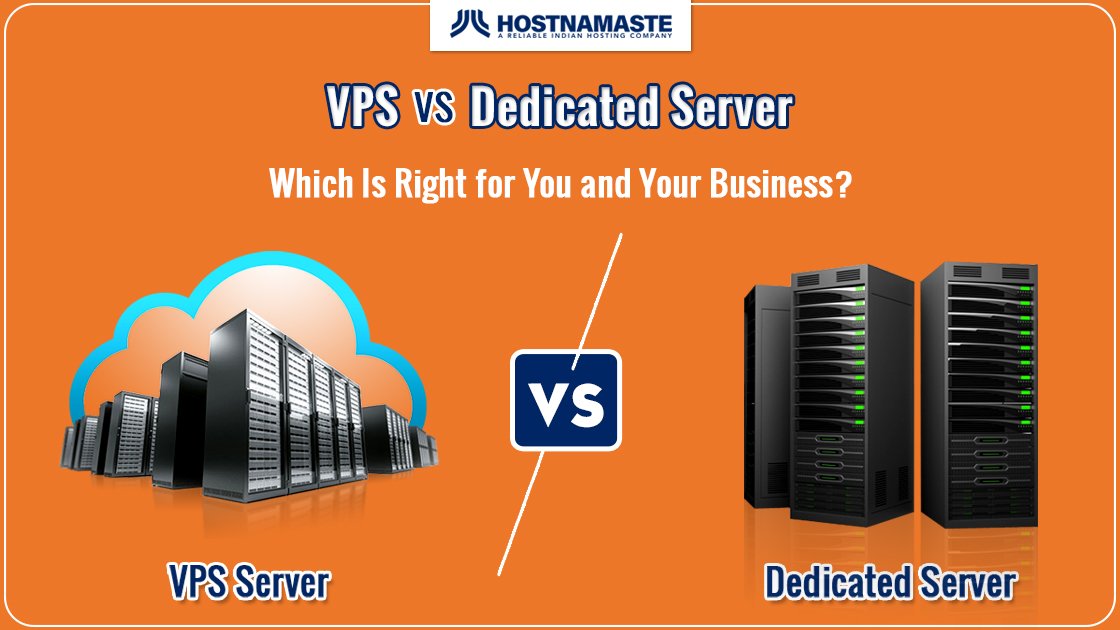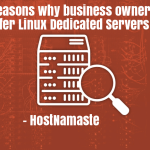
What is a Bare Metal Server? – Everything You Wanted to Know About Bare Metal Servers – HostNamaste
There really is no question that Cloud services presents us with a whole new range of utility ideas for business software environments, providing a large set of advantages such as scalability of the software, organizational stability, increased efficiencies, decreased costs, utilization of energy, enhancement in agility, and more. When contemplating only the standard programming standard, it is more challenging to identify all these advantages.
Today, companies can select from two kinds of clouds in general. Virtual machines that are incredibly simple to optimize but abstract disc, memory, and CPU are supported by conventional clouds and arrive with an output penalty. The actual servers that can also be installed on-demand and paid hourly are simply bare-metal clouds.
When I first learned about bare metal in the sense of a cloud, a query immediately popped up in my head. Will a server configuration need any sort of virtualization from a technical perspective? There are many questions that accompanied this one and I couldn’t help but ponder over a fact that the majority of people have limited information regarding bare metal servers.
For that purpose alone, we’ve decided to formulate this article to make people aware so they can choose bare metal servers without a shadow of a doubt in their minds. In here, you will learn everything there is to know about bare metal servers:
What are Bare Metal Servers?

A physical server devoted to one single tenant is a bare metal server. The occupant of the server is able to configure the server as per its performance, protection, and performance needs. A hypervisor server in which many users share the processing, storage, and other services of a virtual server is an alternative to a bare metal server. Bare metal servers are sometimes referred to as physical servers or managed dedicated servers for single-tenants. The operating system is mounted directly on the computer on a bare metal server, removing layers and offering increased performance.
In its own data center or a collocation center, a company may operate dedicated servers or hire them from a managed service operator on an hourly or monthly subscription basis. This is a fairly recent development that provides a hybrid solution by incorporating the two bits of both dedicated hardware and cloud technology to provide efficiency and cost-effectiveness. Bare metal servers are not exactly modern, either. We can much rather claim them as a reinvention of dedicated servers, but they distinguish from dedicated servers on the basis of how they combine and provide greater stability and controlling costs of cloud-based technology.
No Need for Hypervisors
Yes, you read it correctly. Bare metal servers do, in fact, perform exceedingly without hypervisors. Bare metal servers are configured to meet important, however short-term, criteria for processing. For as long as possible, data may be collected, interpreted, or evaluated on a computer. Afterward, the server can be closed back down until it is no longer necessary. This ensures that resources are not lost and there is no reason for the server to stay operating longer than necessary. By removing the need for a hypervisor layer, bare-metal servers have greater efficiency as the VM monitor that develops, powers VMs and manages the implementation of the guest OS.
It’s occurs due to the fact that you are running the operating system explicitly on the server. Inevitably, operating the hypervisor puts a burden on power, which may contribute to performance loss on cloud servers. On plain metal servers, though, there seems to be no hypervisor layer (because they are committed, physical computers), so this subsequent output hit is avoided. A plain metal server is essentially the same as a dedicated server from a technological viewpoint. One that delivers high-performance services allocated to one client though with the benefit of billing, no contracts, and customizable pay-as-you-use.
Bare-metal Cloud
Bare Metal Cloud is a subclass of the bucket for cloud providers from IaaS. In essence, it is a facility that integrates dedicated server infrastructure along with the connectivity, storage, and facility of the data center that houses it. It is marketed as an OpEx or Operating Cost on a monthly ongoing basis or even in finance terminology. Internal IT workers will usually expend months overseeing lifecycle operations without much of a Bare Metal Cloud infrastructure. They will devote a good portion of their time to replacing obsolete structures and building up new systems. This moment is of little value to the organization as it draws the IT resources away from key business priorities that by creativity or enhancement measures have direct business effects. For workflows that will need to perform in nonvirtualized settings, bare metal instances have been proven to be most ideal.
Bare Metal Architecture
The architecture of virtualization wherein the guest OS runs on top of the hypervisor, which would in turn actively work on the host hardware and facilitate the host resource authorization. A bare-metal server provides you with complete connections to the underlying architecture. The advantage here is that by building your own website to host a service or program, you have more alternatives open.
This takes one to a different turning stage. It is necessary to note that there is actual hardware beneath such a virtualized world. The shared networking implementation paradigm that is characteristic for virtual worlds, however, separates such that the end-user functions with virtual tools, while losing access to the level of bare metal. There is root-level control for the single-tenant of a bare metal node. Additional device solutions are available that are not feasible for a plain metal hypervisor.
Difference Between Bare Metal and Virtual Machines

Both the capabilities of physical computers are allocated to a single customer with the bare metal cloud which can have a higher output than a similar virtualized server. Although resources really aren’t distributed, no hypervisor layer is necessary to enable more of the computing power of the server to be allocated to the application. Its tenancy is the key contrast between the stability of bare-metal servers and virtual servers. Bare-metal servers are single-tenant, as stated previously, whereas virtual machines are multi-tenant. Bare-metal servers alone are known to be more reliable and confidential because of this feature.
The degree of commitment that occurs for clients is one of the major discrepancies here between a bare-metal server and a virtual machine application. A bare-metal server is indeed a physical server that is devoted to a specific client, implying that tenants can not share it. On the other side, virtual machine servers may be exchanged via the hypervisor between multiple occupants and can produce multiple instances of the operating system and as a consequence various independent environments of virtual servers.
Cost
The first point that can be remembered when contrasting prices is that the billing varies between servers for bare metal and virtual machines. The consumer is paid a consistent price for the hosting every month for bare-metal servers, whereas virtual machine servers adopt a defined billing cycle that pays the customer only for the services used. Second, bare-metal servers are typically more costly than virtual servers, although this will rely on whether they are being employed for a sustained period of time with enterprise-grade workloads.
Performance
There is little argument in the area of efficiency as to whether or not bare-metal servers will harness more computing capacity than virtual servers, but the margin might not be as large as expected. On the other side, virtual machine servers have the potential to scale up and down almost instantly, as needed.
Its tenancy is the key contrast between the stability of bare-metal servers and virtual servers. Bare-metal servers are single-tenant, as stated previously, while virtual machine servers are multi-tenant. Bare-metal servers are deemed to be more reliable and confidential by this feature alone.
Deploying a Bare-metal Server

The degree of commitment that occurs for clients is one of the major discrepancies here between a bare-metal server and a virtual machine application. A bare-metal server is indeed a physical server that is devoted to a specific client, implying that tenants can not share it. The hypervisor will share virtual machine servers with many tenants, which can build several OS instances and lead to a variety of independent virtual server environments. Servers are accessible by a private network and the user communicates with the computer via remote desktop access. By connecting to a specified endpoint, a private network link is formed using the VPN. You will use a Protected Shell (SSH) tunnel anytime you choose to link to a Linux-based node. You will then navigate a server as though it were on your workstation physically. For improved confidentiality, remote desktop accessibility encrypts software at the end of the server.
Check the OS periodically and render software updates. This defends the bare metal server against malware attacks. These are hardware or software pieces that preclude undesirable traffic. A consumer can set firewall rules to limit server port, targetted IP, or traffic. The aim is to know which ports to open and for which purposes.
Conclusion
Bare metal servers remain an integral part of the IT infrastructure of several organizations. The usage of this environment has many benefits. Other benefits of bare metal provide the potential to hybridize the infrastructure between bare metal and virtual properties. – Hybrid Servers vs. Dedicated Servers. Bare metal as a long-term option for data storage and conversion should be regarded by rising organizations. There is no better approach in terms of sheer strength, systemic stability, and adaptability.



